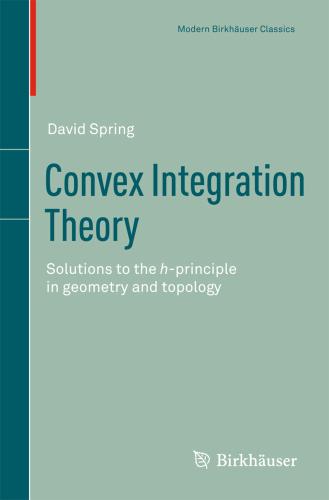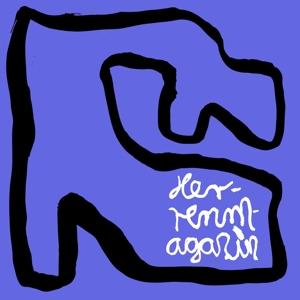
Convex Integration Theory
Solutions to the h-principle in geometry and topology
| Autor | |
| Quelle | Sonstige Datenquellen |
| ISBN | 978-3-0348-0059-4 |
| Lieferbarkeit | lieferbar |
| Katalogisat | Basiskatalogisat |
| Verlag | Springer Basel |
| Erscheinungsdatum | 09.12.2010 |
Beschreibung (Kurztext)
This is a comprehensive study of convex integration theory in immersion-theoretic topology, providing methods for solving the h-principle for a variety of problems in differential geometry and topology, with application to PDE theory and optimal control theory.
Beschreibung (Langtext)
§1. Historical Remarks Convex Integration theory, ?rst introduced by M. Gromov [17], is one of three general methods in immersion-theoretic topology for solving a broad range of problems in geometry and topology. The other methods are: (i) Removal of Singularities, introduced by M. Gromov and Y. Eliashberg [8]; (ii) the covering homotopy method which, following M. Gromov’s thesis [16], is also referred to as the method of sheaves. The covering homotopy method is due originally to S. Smale [36] who proved a crucial covering homotopy result in order to solve the classi?cation problem for immersions of spheres in Euclidean space. These general methods are not linearly related in the sense that succ- sive methods subsumed the previous methods. Each method has its own distinct foundation, based on an independent geometrical or analytical insight. Con- quently, each method has a range of applications to problems in topology that are best suited to its particular insight. For example, a distinguishing feature of ConvexIntegrationtheoryisthatitappliestosolveclosed relationsinjetspaces, including certain general classes of underdetermined non-linear systems of par- 1 tial di?erential equations. As a case of interest, the Nash-Kuiper C -isometric immersion theorem can be reformulated and proved using Convex Integration theory (cf. Gromov [18]). No such results on closed relations in jet spaces can be proved by means of the other two methods. On the other hand, many classical results in immersion-theoretic topology, such as the classi?cation of immersions, are provable by all three methods.




